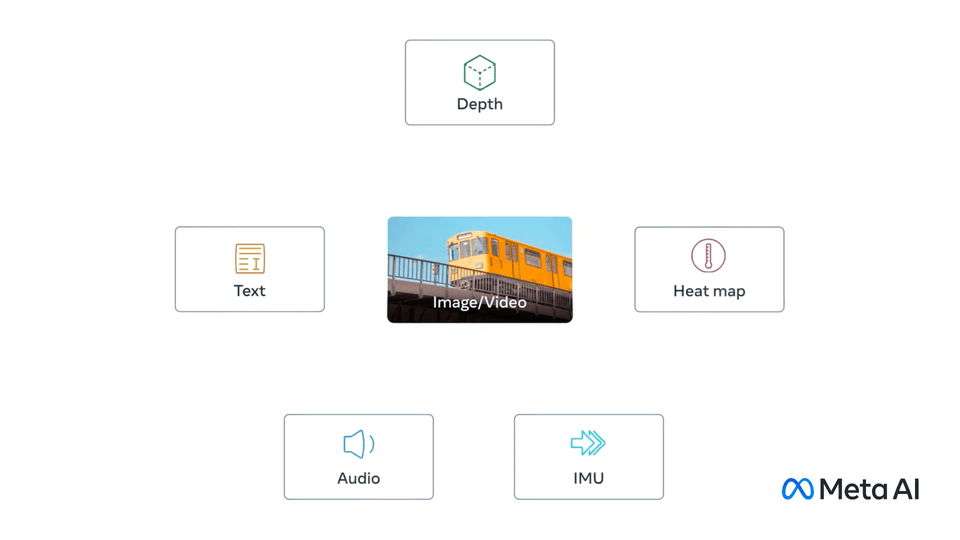ImageBind
YouTube ... Quora ...Google search ...Google News ...Bing News
- ImageBind ... GitHub | Meta
- Video/Image ... Vision ... Enhancement ... Fake ... Reconstruction ... Colorize ... Occlusions ... Predict image ... Image/Video Transfer Learning
- End-to-End Speech ... Synthesize Speech ... Speech Recognition ... Music
- Meta Open-Sources AI Model Trained on Text, Image & Audio Simultaneously | Yana Khare - Analytics Vidhya
- ImageBind: Meta pushes AI boundaries, new tool may enable machines to sense like humans | Sejal Sharma - Interesting Engineering
Meta has recently released a new open-source AI model called ImageBind. This multisensory model combines six different types of data: images, text, audio, depth, thermal, and IMU data. The goal of the research team was to create a single joint embedding space for multiple streams of data using images to bind them together. However, it does not need datasets where all modalities co-occur with each other.
Understands and connects different information forms, including text, image, audio, depth, thermal, and motion sensors.
ImageBind is a significant step forward in the development of multimodal AI models. It has the potential to be used in a variety of applications, such as creating immersive virtual reality experiences, generating realistic synthetic data, and improving the accuracy of machine translation.
The development of ImageBind is also a sign of Meta's commitment to open source research. By making the model available to the public, Meta is encouraging other researchers to build on its work and develop new and innovative applications for multimodal AI.
Here are some of the potential applications of ImageBind:
- Virtual reality and augmented reality
ImageBind could be used to create more immersive virtual reality and augmented reality experiences. For example, it could be used to generate realistic 3D models of objects and environments, or to create audio and visual effects that match the user's movements.
- Synthetic data generation
ImageBind could be used to generate synthetic data for training machine learning models. This could be useful for tasks such as object detection, natural language processing, and machine translation.
- Machine translation
ImageBind could be used t o improve the accuracy of machine translation. For example, it could be used to generate realistic translations of audio and video content, or to translate text that is accompanied by images or other sensory data.
ImageBind is a promising new technology with the potential to revolutionize the way we interact with computers. It is still under development, but it has the potential to be used in a variety of applications that could make our lives easier and more enjoyable.
